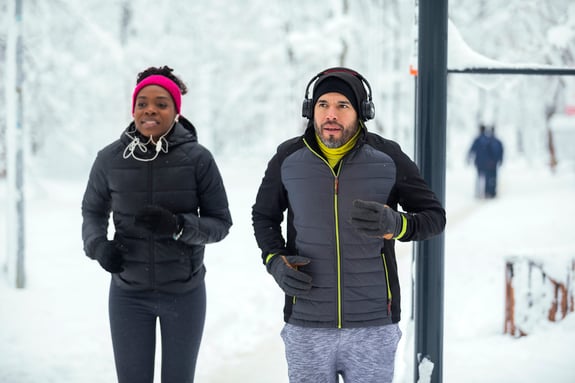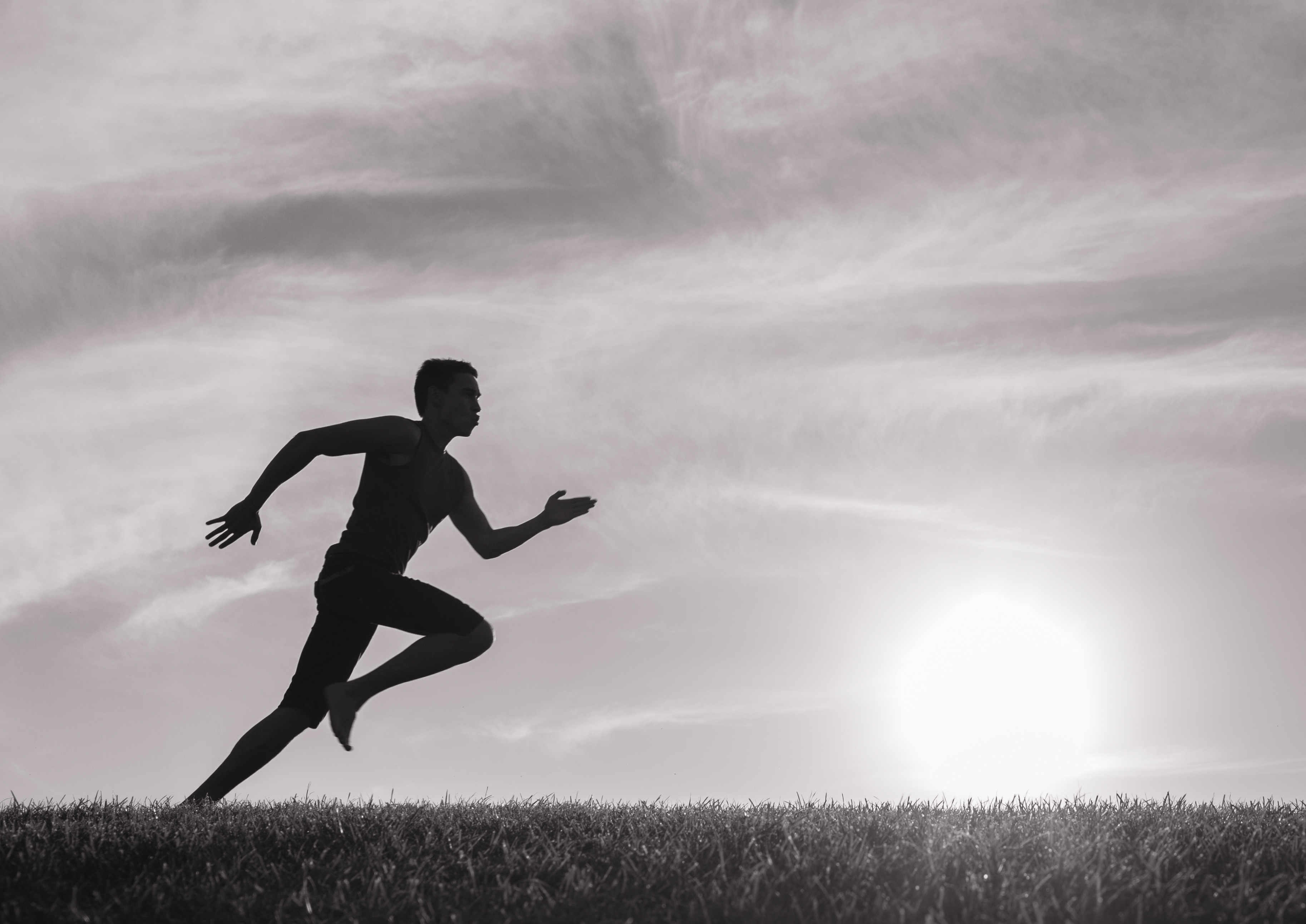 The use of sprints in the world of fitness and sport performance is nothing exceptionally new, but can be really new to you. Actually, sprinting (fast, short bouts of running) was used to stay alive long before we used it as a mode of training.
The use of sprints in the world of fitness and sport performance is nothing exceptionally new, but can be really new to you. Actually, sprinting (fast, short bouts of running) was used to stay alive long before we used it as a mode of training.
Author Mark Sisson has spent a great deal of time spreading the message of the importance of sprinting to overall health, and that it was a huge part of the daily life for our very early ancestors. He believes, and I like his theory, that primal humans (represented by a caveman known as Grok) owed their fitness to three important concepts.
- They walked great distances during their hunting and gathering trips.
- They lifted heavy things such as building materials and large animals.
- They sprinted for their lives from time to time from wild animals, and chased down game for their paleo dinner.
So Mark says, walk a bunch, lift heavy things (and set them back down, of course) and sprint once in a while and fitness will find you. I think he nailed it. There isn’t much difference between a sound fitness program and what I just described. But for now, we will focus on the sprinting part.
The Benefits of Sprinting
There are easily a hundred benefits of sprinting. This acute stressor can have many positive effects on your body. Here are just a few benefits of adding sprint work into your training.
- Sprinting can be used across all fitness levels.
- Sprinting doesn’t take a lot of time to do.
- Sprinting burns fat.
- Sprinting improves endurance.
- Sprinting improves insulin sensitivity.
- Sprinting is a fun and easy way to get and stay lean.
When implementing sprinting into your training, there are some pretty important steps to follow. To help you get started, here are a few tips that will get you on your way to sprinting more in 2020.
Step #1: Prepare Your Feet and Mobilize Major Joints
Step #2: Perform a Proper Warm-up
Step #3: Ease into Sprinting
When starting your sprinter program, follow a progressive level of intensity and volume. You do not want to start out with all-out sprints for 100 meters for sets of 5 to 10. That is a surefire recipe for an injury at worst, and failure to perform the movement properly at best.
A great tip I picked up from Eric Cressey is to start by sprinting uphill first before moving to the track or any flat surface. This will help with proper mechanics and decrease the chances of injury because you are less likely to overextend. Your timed intervals should start at a 1:2 work-to-rest ratio and gradually ramp up to a 1:1, and even a 2:1 ratio. For example, do :20 of max work followed by :40 of rest, then repeat for the desired number of sets.
I am also a huge fan of using your heart rate as both a measure of intensity and for determining your rest. You would rest until your heart rate recovered to 110–120bpm before starting your next set. The bottom line is that there will be no first-place ribbon waiting for you at the end of your sprint, so know your limits and use a progressive program when implementing sprinting.
Step #4: Mix It Up with Different Types of Sprinting
One of the best things about sprinting is that there are several ways to sprint, and they don’t always have to be fast. Fast is a relative term, and is specific to you and what you are trying to accomplish. Your sprints don’t have to be rep after rep of 100m dashes, unless that works for you and you are well prepared to take on such intensity. If you intersperse a couple periods of higher effort levels with periods of lower effort levels, you will be in good shape (pun intended).
Here are some other sprinting options:
- Treadmill Sprints (video)
- Airdyne Bike Sprints
- Rowing Sprints
- Cross-Trainer Sprints
- Ski Erg Sprints
Sprinting can be a fun and very effective training tool in both fat burning and performance. I can’t stress enough the importance of a proper warm-up and easing into higher-intensity sprints. Stay healthy so you can stay moving! (And if you get injured, see this blog for tips on working through it.)
This blog was written by Tony Maloney, Health Fitness Specialist and Fitness Center Manager. To find out more about the NIFS bloggers, click here.

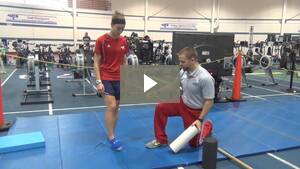
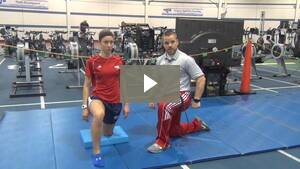

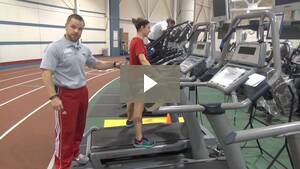

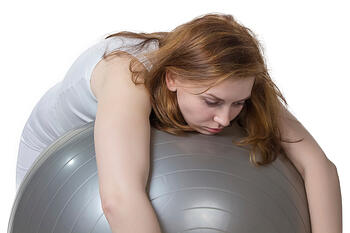 This is the time of year when everyone seems to be getting sick. A head cold, the flu, a constant cough, a sore throat, chest cold, sinus infection…you name it, it’s around. I know when I am under the weather, one question that comes to my mind is, “Should I work out, or should I just let my body rest for a few days?”
This is the time of year when everyone seems to be getting sick. A head cold, the flu, a constant cough, a sore throat, chest cold, sinus infection…you name it, it’s around. I know when I am under the weather, one question that comes to my mind is, “Should I work out, or should I just let my body rest for a few days?”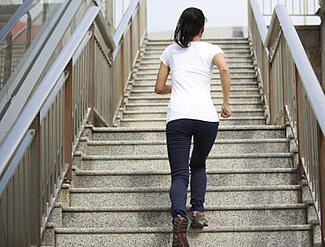 What has become of our society and fitness? We hear reports all the time that state that the
What has become of our society and fitness? We hear reports all the time that state that the 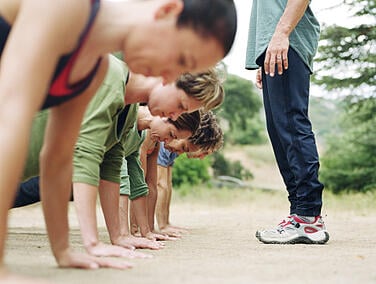 There is a fitness trend that has been bothering me for a long time, and in recent years it has gotten exponentially worse. There are exercise programs that have actually declared war on the human body, and by doing so, have widened the gap further between health and fitness.
There is a fitness trend that has been bothering me for a long time, and in recent years it has gotten exponentially worse. There are exercise programs that have actually declared war on the human body, and by doing so, have widened the gap further between health and fitness. So how can we stay motivated for winter workouts? Here are a few ideas:
So how can we stay motivated for winter workouts? Here are a few ideas: For people new to fitness, creating a healthy body image can be as challenging as creating a workout or diet plan. What do we consider healthy and why?
For people new to fitness, creating a healthy body image can be as challenging as creating a workout or diet plan. What do we consider healthy and why?
 If you are anything like me, the new year comes with lots of “I’m going to do this (fill in the blank) better than I did last year,” or “I am starting a new workout plan for the year,” or maybe “My goal this year is to ________.” Then mid-February hits and all those New Year’s habits you planned to start, goals you were working toward, or things you were going to do better on have fallen off the radar.
If you are anything like me, the new year comes with lots of “I’m going to do this (fill in the blank) better than I did last year,” or “I am starting a new workout plan for the year,” or maybe “My goal this year is to ________.” Then mid-February hits and all those New Year’s habits you planned to start, goals you were working toward, or things you were going to do better on have fallen off the radar. It’s that time of year again, the time when most are bombarded with messages of New Year’s resolutions and how to
It’s that time of year again, the time when most are bombarded with messages of New Year’s resolutions and how to 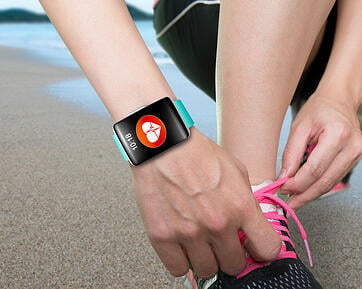 Wearable fitness technology
Wearable fitness technology
